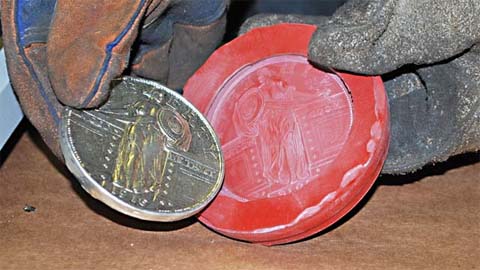What Happens When You Pour Pewter Into A Ceramic Mold

We ve done pewter casting in the past but we re really starting to get a lot better at it.
What happens when you pour pewter into a ceramic mold. Put down the torch and firmly grasp your mold. Ways to use plaster molds mold release first it is useful to understand mold release. The last tip was on mixing and pouring plaster. For a sacrificial shell mold a small screwdriver works very well as a chisel to break the shell away from the model.
After thoroughly cooling the piece is ready to be demolded. If you are using a sacrificial shell mold running cold water over the model will help it cool faster. A mold made of metal works for low temperature metals. This will allow air bubbles which are common in pewter to escape from the mold.
The power of pewter casting. Remove the pewter cast from the mold. Graphite is an ideal material for metal casting as it can withstand extremely high temperatures. The first problem is water steam.
If you notice debris you can first strain the slip prior to pouring into the mold. The perfect detail can be seen in the reproduction of the final pewter casting. Lightly brush the inside of the mold with baby powder or powdered graphite. Finally demold the part.
Wait until the pewter solidifies. Ways to use plaster molds this is the second in a series of 3 tips on plaster and molds. Many castings can be created in a mold max 60 mold. The purpose of mold release is to form a barrier between objects so you can separate them later.
Pour the liquid pewter into the mold and let is set for at least 24 hours. Watch the button the small pewter circle formed at the entrance to the mold. Quickly pour your melted pewter into the hole at the top of the mold. When this has solidified so has the rest of the mold.
You will need a mold to pour your melted material into in order to create a loaf bar coin or ingot. Pour the hot liquid pewter into a mold and continue to fill another mold before the pewter cools. Holding the mold at a slight angle slowly and steadily pour slip into mold opening called a pour gate. Check out our new improved techniques plus some testing with low.
A pint of slip can yield 10 to 12 castings for small molds like the castables make sure you salvage unused slip after every pour. Don t use too much force or you risk chiselling into your part. Keep in mind materials like plaster of paris have water of hydration which can be released although they look dry.














































